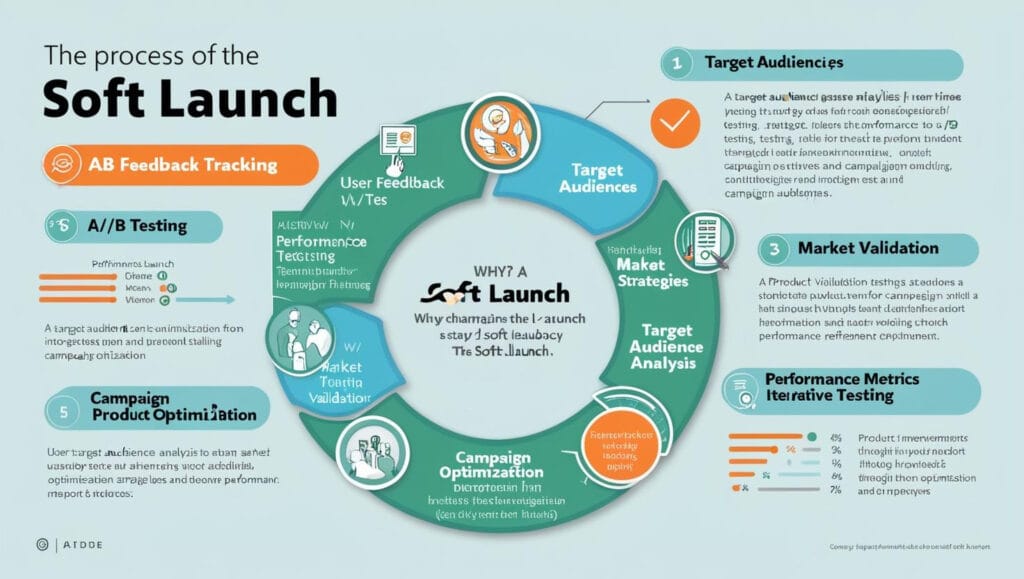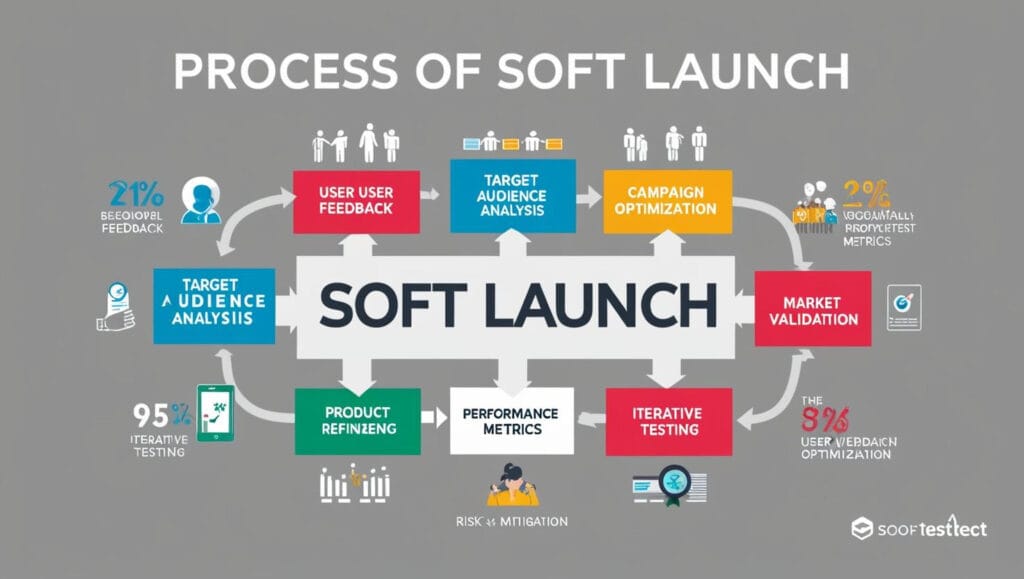Soft Launch: Techniques and Case Study for Effective Implementation
A soft launch is a strategic approach used to introduce a product, service, or campaign to a limited audience before rolling it out to the broader market. This allows creators to gather valuable feedback, test performance, and refine the offering without risking a full-scale launch failure.
In this guide, we’ll dive into practical techniques for a successful soft launch and provide a real-world case study to illustrate its implementation.

What is a Soft Launch?
A soft launch involves releasing a product or campaign to a smaller, controlled audience to:
- Identify potential issues or flaws.
- Evaluate market reception and performance metrics.
- Gather user feedback for improvements.
This strategy is commonly used in industries like mobile app development, game publishing, and digital advertising.
Key Benefits of a Soft Launch
- Risk Mitigation: Detect and resolve issues before a full-scale launch.
- Market Validation: Test the appeal of your product or campaign with real users.
- Cost Efficiency: Avoid wasting resources on ineffective campaigns.
- Audience Insights: Understand user behavior, preferences, and pain points.
- Iterative Improvement: Fine-tune based on feedback and performance data.

Techniques for a Successful Soft Launch
1. Define Objectives and Metrics
- Establish clear goals for the soft launch. Examples include testing user acquisition costs, identifying bugs, or gauging audience engagement.
- Determine key performance indicators (KPIs) such as click-through rates (CTR), conversion rates, user retention, or ROI.
2. Choose a Target Market
- Select a representative but limited audience.
- For digital campaigns, this might involve targeting a specific geographic region or demographic group.
- In app development, soft launches often occur in smaller countries like New Zealand or Canada to test diverse user behaviors.
3. Prepare the Product or Campaign
- Ensure the product is functional and represents your core value proposition.
- For digital ads, develop multiple variations to test which creative works best.
- Provide clear communication about the soft launch to your audience, emphasizing that this is a testing phase.
4. Monitor and Collect Data
- Use analytics tools to track user behavior and engagement.
- For example, Facebook Ads Manager can provide insights into ad performance, while tools like Mixpanel or Google Analytics track app or website activity.
5. Incorporate Feedback
- Act on feedback to resolve pain points and refine the product or campaign.
- Prioritize issues based on their impact and feasibility.
6. Iterate and Retest
- Conduct multiple iterations of testing if necessary.
- Adjust and improve based on new data and repeat the process until satisfied with results.
7. Scale Up
- Once the product or campaign meets your success criteria, proceed with the full-scale launch.
- Leverage insights from the soft launch to optimize your go-to-market strategy.

Soft Launch Case Study: Mobile Game Advertising Campaign
Scenario: A game developer is preparing to launch a new mobile game and decides to run a soft launch to optimize their Facebook advertising campaign.
Step-by-Step Implementation
Step 1: Define Objectives
- Test ad creatives to identify which resonates most with players.
- Measure user acquisition cost (CAC) and early retention rates (e.g., Day 1 Retention).
Step 2: Choose a Target Market
- Target audience: Young adults aged 18-34, primarily in Canada (a market with diverse user behavior but lower competition).
Step 3: Prepare the Ads
- Create three ad variations:
- Gameplay-focused video ad.
- Character-focused image ad.
- Humor-driven animated ad.
Step 4: Monitor Performance
- Run ads for two weeks using Facebook Ads Manager.
- Key metrics tracked:
- CTR (Click-Through Rate).
- CAC (Cost per New Player).
- Engagement metrics (Likes, Comments, Shares).
Step 5: Analyze Results
- Ad 1 (Gameplay-focused) had the highest CTR at 5.2%.
- Ad 2 (Character-focused) drove the most comments and shares, showing potential for community-building.
- Ad 3 (Humor-driven) had the lowest CAC, making it the most cost-effective for acquisition.
Step 6: Feedback and Adjustment
- Feedback from comments suggested players wanted clearer tutorials and more story elements in the game.
- Adjustments made:
- Updated game tutorial based on comments.
- Refined ad creatives to emphasize storyline and gameplay highlights.
Step 7: Iteration and Retesting
- Ran updated ads for another week with improved creatives.
- Observed a 20% decrease in CAC and a 15% increase in Day 1 Retention.
Step 8: Full-Scale Launch
- Launched the game globally with optimized ads and a tutorial update, leading to a successful campaign with a 25% higher ROI than initially projected.

Tips for Effective Soft Launch
- Set Realistic Expectations: A soft launch isn’t about perfection but improvement.
- Communicate Clearly: Let participants know their input is valued and that this is a testing phase.
- Use Reliable Tools: Leverage tools like Facebook Ads Manager, Google Analytics, or App Annie for comprehensive performance tracking.
- Be Ready to Adapt: Stay flexible and open to unexpected insights.
- Focus on Scalability: Ensure changes made during the soft launch can be applied to a larger audience.
Conclusion
Soft launching is an invaluable technique for fine-tuning products and campaigns. By starting small, collecting feedback, and iterating based on real-world data, businesses can significantly improve their chances of success when scaling up. Whether you’re testing a new game, a digital ad, or a product feature, a well-executed soft launch is the key to minimizing risks and maximizing impact.